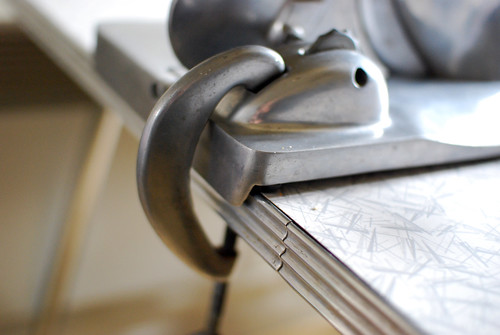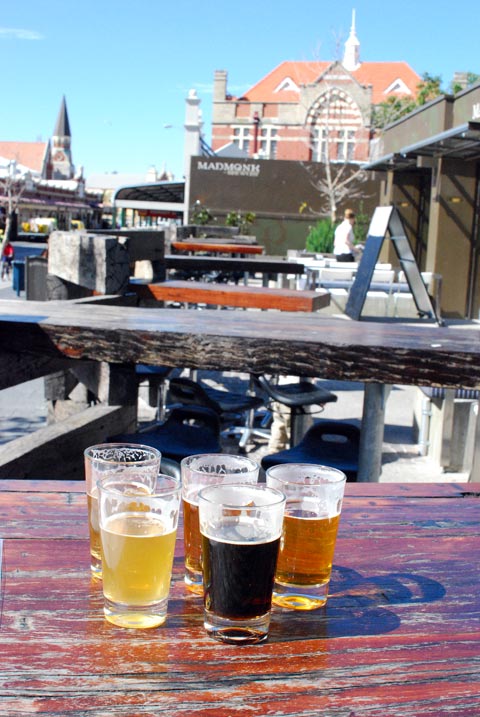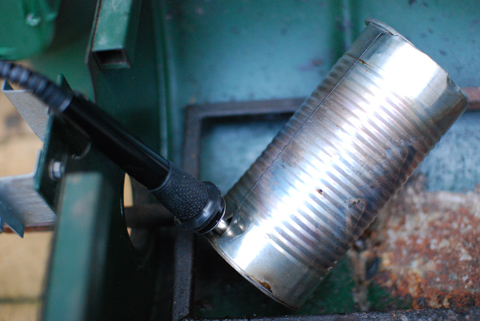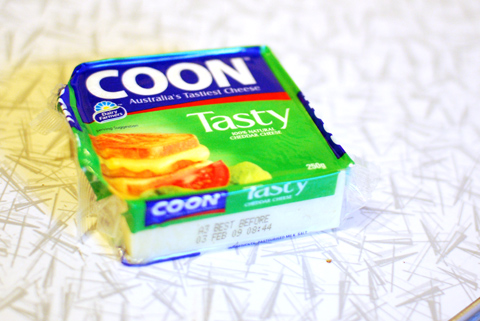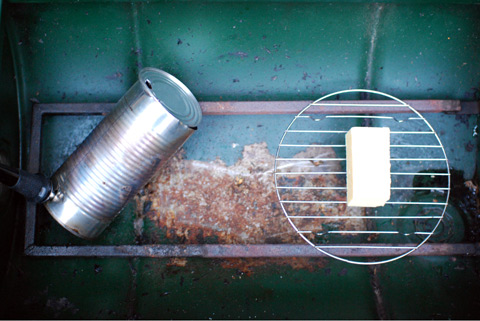Had I forgotten something from the menu at Little Creatures Dining Hall in Fitzroy? Had I made an unfair comparison to its Western Australian brewery progenitor?
In the interests of factual accuracy, I flew across the country to Perth to find out.
 Click the image to see full panoramic glory
Click the image to see full panoramic glory
On the westside, Little Creatures seems to be undergoing an identity crisis. Originally, the Little Creatures brewhouse and restaurant was housed in a set of two identical, adjoining sheds converted from their earlier role housing boats for the America’s Cup. It was a grand building to convert for this purpose: almost central Fremantle; overlooking the harbour with its eponymous medicament breeze; open space aplenty for the stainless tanks of a professional but small-scale local brewery. A thin membrane of plexiglass bisected the two sheds dividing the drinker from the brewer whilst keeping them in close proximity. The men’s urinal even had a chest-high window into the brewery so that male patrons could see the beer come full circle.
The bar and restaurant retained an ad hoc feel of a joint that was built to satisfy the brewers next door rather than the general public. It was packed with pipes, girders, pallets, bare chain link, fairy lights. For all its gleaming stainless steel and cavernous industrial space, the bar and restaurant had an appropriate feel of little-ness and being a bit half-arsed in a way that suggested that the owners were too busy making hand-crafted ale to care where the public drank it.

Little Creatures Brewery, original pair of sheds on the left, new sheds on the right. This is how Perth looks in midwinter. Sunny and laden with cockatoos.
Where once a microbrewery stood (albeit, a microbrewery with an impeccable fitout) now stands an industrial cathedral worship of hops. The site has now expanded into an extra shed and some grain silos. They’ve built a lounge bar next door called The Loft, a name with all the generic urbanity of Ikea. Ikea would probably fit an umlaut in there somewhere, though.
The original bar and restaurant are otherwise unchanged, apart from the old urinal with a view, which has shifted. On my Monday morning visit, my waiter apologized at 11:00am that the table service might slow down because a table of 60 people had arrived, unannounced. Amongst the hundred or so breweries that I’ve seen, I can’t think of another that is getting hammered by customers early on Monday – so my guess is that the bar and restaurant wouldn’t want to change their business, ever.

There is no mistaking that Little Creatures are stepping up from the micro-league and are taking aim at the mainstream drinkers of Australia. The place now feels big. With their extra brewing capacity, they’re now covering as much of the mainstream palate as possible.
They now produce a pilsner as bland as the style requires, a cider (Pipsqueak), an amber ale (Roger’s) and a “bright” ale that has less bold hops and maltiness than their flagship American pale ale. I certainly don’t begrudge them for brewing blander and less complex beers. If they are planning on moving up from a microbrewer to challenge the mid-sized likes of Coopers in Australia (and beginning to export seriously) then it is inevitable that they will brew less challenging beers because that is what the global market currently drinks in vast and unending quantities. As much as I whined about bland Asian pilsners in Cambodia, I did neglect to mention that bland pilsners are the brew that the majority of the world’s drinkers enjoy; the more nondescript, the better. “Interesting” is not an adjective that most people would ever wish to append to their beer. The decision to go blander has seen Little Creatures bright and amber ales achieve double digit growth in the last year.
Little Creatures early success came from doing something that would seem unremarkable if viewed from the perspective of the American microbrew market: brewing consistent American pale ale in Australia. That they managed to thrive from the start by doing so is an achievement and a nice testament to Perth’s preference for drinking locally. We could be drinking any number of floral American pale ales from America (or elsewhere), but we were smitten by the one from Fremantle.
The added bonus of Little Creature’s changing identity from micro to mid-size for Melburnian drinkers is that the old equipment from the Fremantle brewery is headed over east to Healesville.

When brewery logos attack.
According to Little Creatures press release:
Work has commenced on building a brewery in the Yarra Valley town of Healesville…The original Fremantle brew house will be relocated to the site and the first brew of what will be a new national brand will be ready for sale early in the new calendar year.
The brewery is under construction Lot 2/316-336 Maroondah Highway, Healesville, next to the Innocent Bystander winery.
My guess for that new brand: Hoegaarden clone. The last few years of Australian brewing have been awash with cloudy and “blonde” beers, so why shouldn’t Little Creatures follow the pack instead of leading?

A pint of Little Creatures Pale Ale, as delightful as ever
Location: Little Creatures Brewing, 40 Mews Road, Fremantle, Western Australia. A short walk from the Fremantle train station.
